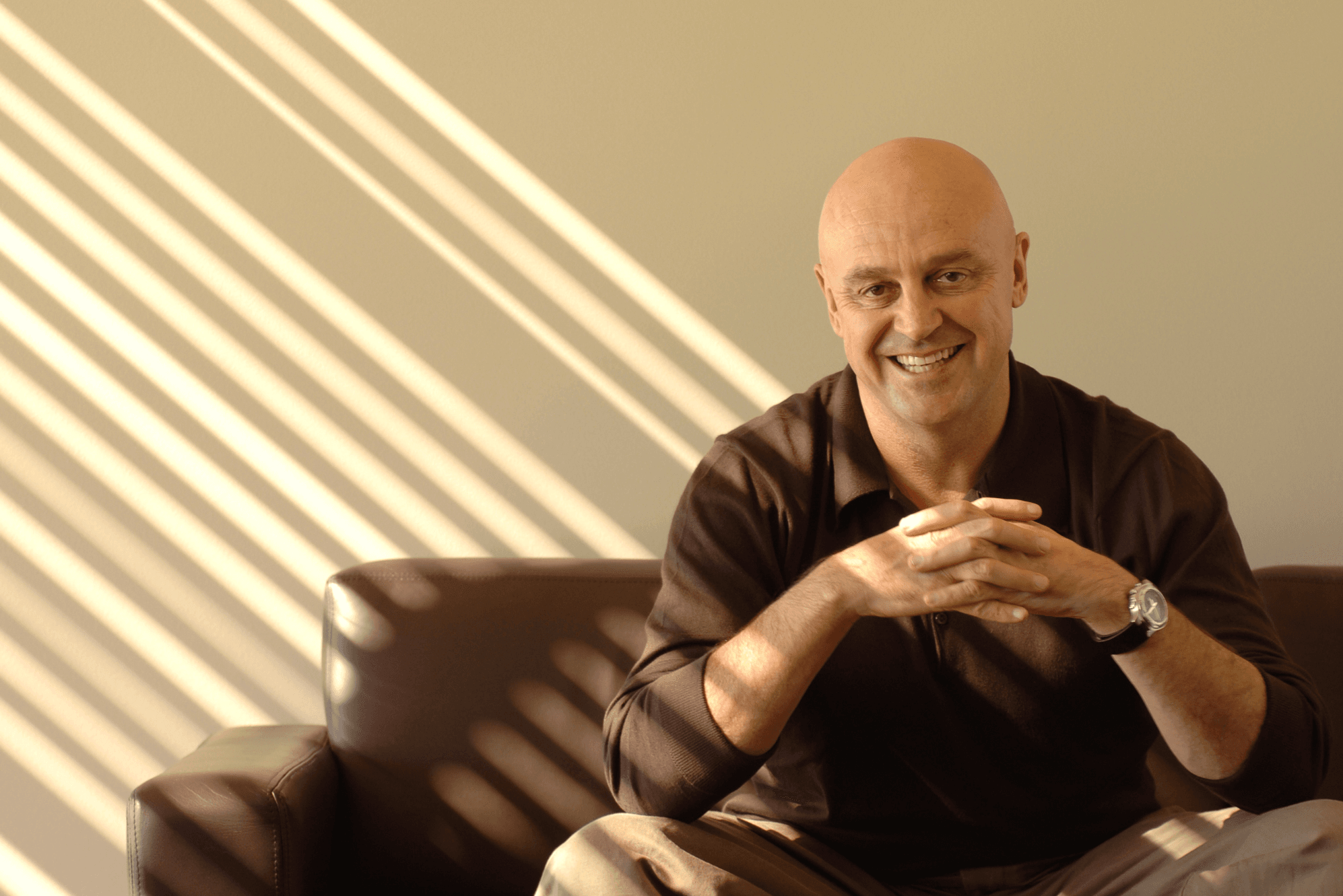When Liberty Wines was founded in 1997, our first Australian producer was Michael’s Shaw + Smith. From day one, Michael Hill Smith MW has been a key part of our business, both as a producer and as a director at board level. He is Australia’s first Master of Wine and additionally co-owns Tolpuddle Vineyard in Tasmania and MMAD in McLaren Vale.
On his recent trip to London, we sat down with Michael to look back over his 40+ year wine career, the fascinating characters who helped shape it, and what continues to drive his passion for site-specific Australian wine today.
For more information about purchasing any Shaw + Smith, Tolpuddle Vineyard or MMAD wines, please contact your Account Manager. Not yet a customer? Contact Us to discuss opening an account.
You were born and raised in wine, with Yalumba being your family’s winery in Barossa. What formative experiences did you have that cemented your own interest in wine?
Well, I’m a sixth-generation wine producer, which is rather embarrassing - you'd think after six generations, I might have found something else to do, but apparently not!
I was brought up in the Barossa at the [Yalumba] winery, so I remember as a child being really aware of every vintage - the trucks coming and going, the constant action and the smell of grape juice and fermentation. We were “free range” children with the run of the winery. We worked out early on how to break into the cellar on weekends, climb the barrel stacks and play with machinery we probably shouldn’t have touched! It was fun and totally unrestricted.
Also because we were in the wine business – we are wine and food people. In a way, this defined us, it is who we are and what we do, and it stuck with me.
 Image Credit: The Len Evans Tutorial
Image Credit: The Len Evans Tutorial
I remember reading about how you worked for Len Evans [the larger-than-life Welshman turned Australian bon vivant] at his famous Bulletin Place wine shop/restaurant. How did Len inspire you?
I faced a conundrum when I was young - I was born into a winemaking family and loved wine, but I didn’t like the idea of being trapped in a family dynasty. Len Evans showed me I could have a wine life outside the restrictions of a multigenerational family business. I’m indebted to him for this and so much more.
My father, Mark, introduced Len to the Australian wine industry in the mid-50s, so Len was always a big part of our lives. He was this short, bombastic, larger-than-life character. He would just sweep into a room and always told the funniest jokes and most irreverent stories. Yet, most importantly, he was genuinely interested in younger people in wine, and he was interested in me.
So, whilst I had second thoughts about going into the family wine business, I had no second thoughts about going into wine because of Len.
When I was of “wine age”, I would regularly fly down to Sydney to be an unpaid waiter at his great bottle dinners, just to be part of these extraordinary events – great wines and sparkling people! I was fascinated by it all.
All the things I’ve done in wine - my interest in fine wine, in wine judging, learning more about wine generally, not just Australian wine – it all came from Len. He had a huge influence on me. He arrived in Australia with nothing, and he showed me that you could, in fact, achieve most things if you had drive, enthusiasm and were prepared to put in the hard yards.
Later on, when I was toying with the idea of doing the Master of Wine, Len was very encouraging, even though, in those days, the MW programme wasn't open to anyone other than the UK wine trade.
That actually ties in nicely with my next question, which is what made you decide to try and become a Master of Wine? Especially given that being an Australian made something that was already difficult even harder.
I had met a number of Master of Wines in Australia. Probably the most famous being Michael Broadbent, who once again, I'd met through Len. Being an MW was exactly the quixotic vinous challenge I was seeking. I just thought that it was a remarkable thing to do.
I remember walking into a wine shop in St James’ in London and speaking to an MW who had just been elected to the Master of Wine Council. I said something along the lines of ‘When are you bastards ever going to let non-UK wine trade sit your exam?’. As it transpired, the Council had been discussing the future of the Institute that very week! So, I went back to Australia and enrolled in my Diploma which I did in stealth, and sat both parts at the same time to minimise travel.
Luckily, I passed, so I wrote to the IMW, and eventually, they let me enrol on the programme on the basis that I moved to the UK. I was their canary in the coal mine. This then takes us conveniently to my first day at school…
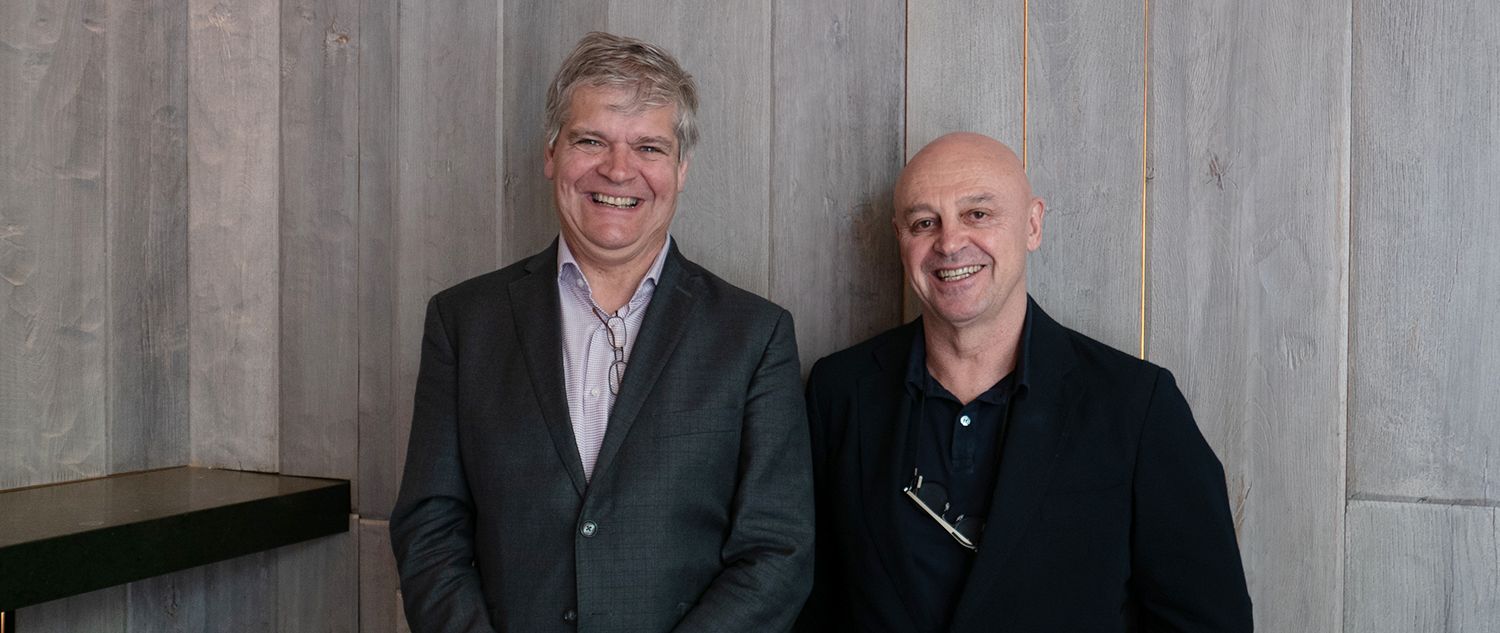
Is that by any chance where you met a certain David Gleave MW?
Exactly. So, as you can imagine, I walked in and was fairly apprehensive. Certainly, there was a sort of novelty factor about me as an Australian because everyone knew that it was the first time they'd ever allowed anyone from “outside” on the course.
And the only seat available in the auditorium was next to a young David Gleave. We’ve really just been best friends ever since.
Let’s talk about Shaw + Smith. Why did you and your cousin Martin decide to work together?
I passed my MW in '88 - won the inaugural Madame Bollinger Tasting Medal that same year too! - and returned to Australia. Meanwhile things had changed at Yalumba – there was a family buyout, I sold my shares and was figuring out what to do next.
Somewhat on a whim, my talented, younger winemaking cousin Martin Shaw and I teamed up to form Shaw + Smith in 1989. Martin had been making wine all over France, and despite an age gap, we had always shared a love of fine wine - we were more like brothers than friends. And like most young, arrogant people with a high tolerance to risk, it never occurred to us that anyone wouldn’t want to buy our wine!
Our first vintage was in 1990 – we purchased grapes and used someone else’s winery, which is very much what you do in the early days. We ended up in a situation where we’d optimistically made a little bit more wine than we probably should have! I remember hopping on a plane, flying to London to see David [Gleave MW], who in those days was working with the late Nick Belfrage MW at Winecellars [in Wandsworth]. I showed them our first wine, a Sauvignon Blanc, which didn’t even have a label. Luckily they placed a significant order which, to be honest, really saved our arses!
So from the first vintage, Shaw + Smith has always been imported to the UK?
Yes, David [Gleave MW] has taken Shaw + Smith from day one. And so, as you can imagine, he's been interested to see how we have developed, and it's also been fascinating to follow him in his career.
A decade later David and I were drinking the second half of a good bottle when David confided he was not completely happy working where he was. I said, "Well, you know, why don’t you do your own thing? Why don't you, why don't you form your own company?". So, I guess you could say that I helped push and prod him in the direction of founding Liberty Wines alongside Luciann [Flynn, David’s wife and a previous director at Liberty Wines]. Together, we said “Don’t die wondering”. As a result, Shaw + Smith has been involved with Liberty Wines since day one, and I have been a director ever since.
It’s certainly been an interesting odyssey for Liberty Wines and for us at Shaw + Smith because of David. He’s an unusual blend. He’s a totally committed fine wine man with a great palate and understanding of quality. He’s also someone who has commercial smarts, so he actually understands how to run a good business. And finally, he is extremely nice! So, when you put those three things together, it's not surprising that his contributions to industry have been so profound.
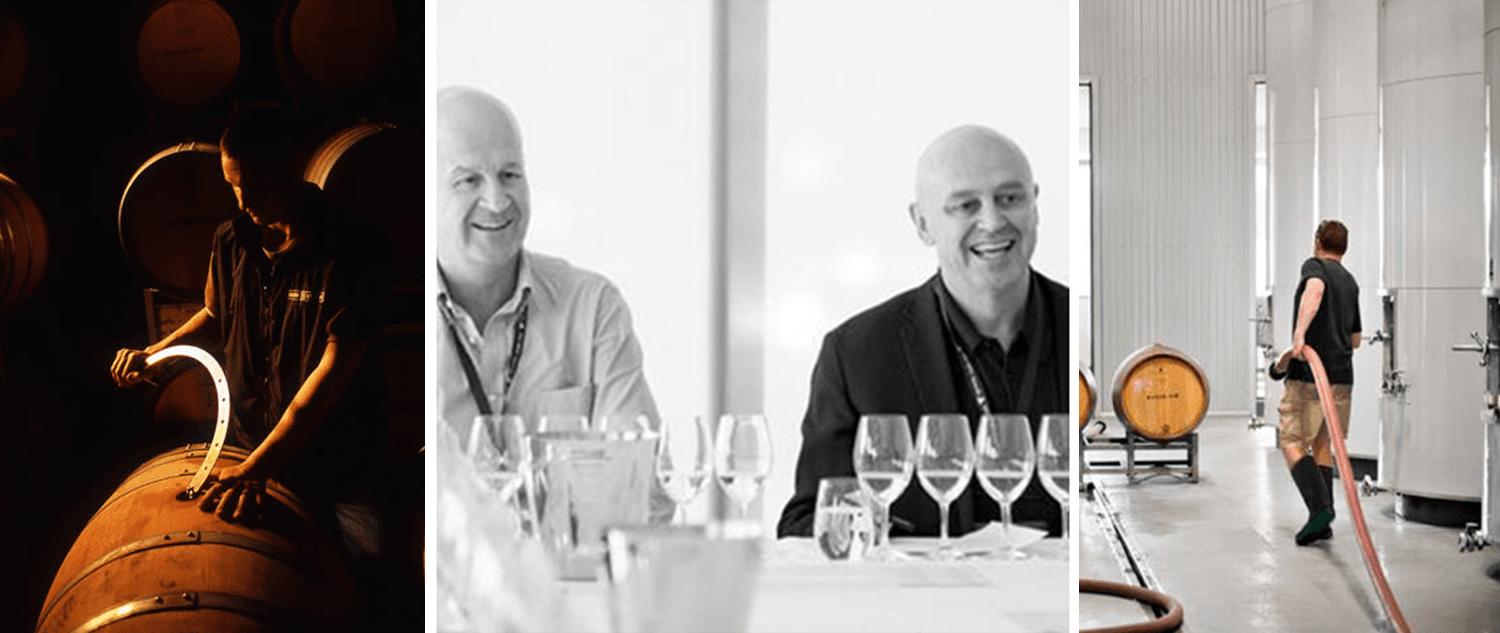
So, you grew up in the Barossa and didn’t want to go into the family business there. With Shaw + Smith, you ended up in the Adelaide Hills. Why did you and Martin choose this area?
We chose the Adelaide Hills over a warmer region, principally because Martin [Shaw] had been working closely with Brian Croser [a pioneering figure in Australian winemaking] at Petaluma. Petaluma, back then, was one of the most exciting Australian wineries – the Camelot of its time. It was a very important place. I really shared Martin’s excitement for this new “cool climate’ region and Brian’s vision.
We understood from Brian that varieties like Chardonnay, despite being planted on any number of sites in Australia, were working really well in cooler sites. We all drank Brian’s Kool-Aid and were convinced that this relatively new area – the Adelaide Hills - with its higher altitude, rainfall, and cooler climate, could produce wines of real excitement and international relevance.
How have the Adelaide Hills and Shaw + Smith changed over the last 30+ years?
Today, the Adelaide Hills is recognised for Sauvignon Blanc, Chardonnay, Pinot Noir cooler climate Shiraz and Sparkling. At best, these wines can be exceptional. Interestingly, there are quite a number of producers outside of the Adelaide Hills buying Adelaide Hills grapes, particularly Chardonnay, because they realise how special Chardonnay from the region can be. There’s a lot of recognition and respect now for the area.
From a Shaw + Smith viewpoint, we've just completed our 34th vintage, and I believe we have constantly refined and improved what we do over the decades. Probably 10 years ago, Martin and I were getting older and asking, ‘What was next?’ and ‘Where did the next spark come from?’
Luckily we found two rockstars! David LeMire MW who, like David Gleave, is one of those top commercial people with a love and understanding of fine wine. And Adam Wadewitz, who is just one of those once-in-a-generation winemakers with great sensitivity to what's happening in the vineyard. Adam spends more time in the vineyard than he does in the cellar!
We have always made good wine, but Adam has taken us to another level over the last decade with the introduction of our Shaw + Smith single vineyard wines, the constant refinement of what we’re doing in the cellar and a greater understanding of vineyards. It’s become really exciting.
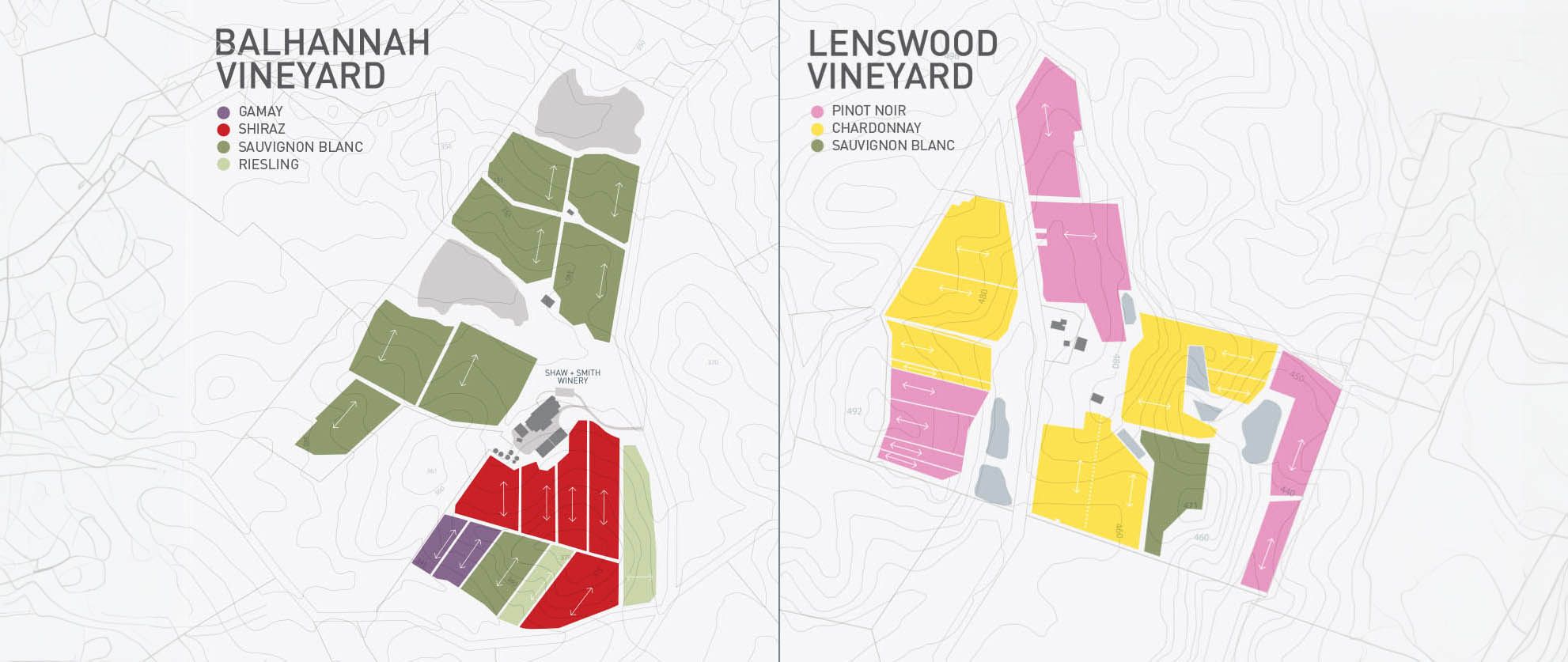
You have some great single vineyards, like Lenswood and Balhannah, could you talk us through them?
Lenswood is a very beautiful vineyard. It’s quite high and planted predominantly to Chardonnay, some Pinot Noir and a hat full of Sauvignon Blanc. We’ve spent a lot of time doubling the planting density using the ancient process of ‘layering’. So now, instead of 2400 vines per hectare, it’s closer to 5000. This has been an excellent move in terms of quality. Lower yield per vine with higher density resulting in greater concentration of flavour and aromatics.
We also adopted this move to higher-density planting at our Balhannah Vineyard – planted at around 5500 vines per hectare. We’ve got some really interesting Shiraz clones there, planted on red earth and combined with the very close planting, you get grapes that are very distinctive. We make the wine with a high percentage of whole bunch, too. It's a very unique site that is quite exciting for me. It’s something I'm very proud of.
Then, some years ago, we realised that the coldest, wettest part of the Adelaide Hills is the Piccadilly Valley, just below Mount Lofty, which is the highest point in the area. So, we bought a site there, which was unplanted and went against the advice of several people, including our accountants.
The one thing that was missing from our vineyard mix was a vineyard in the Piccadilly Valley - the coldest, wettest and highest part of the Adelaide Hills. So some years ago, we bought a small green field site and, against the advice of some, decided to plant hyper-close Chardonnay and Pinot Noir at more than 10,000 vines per hectare!
Early indications are that the fruit here will be really special. Planting that vineyard shows that even though we could’ve been resting on our laurels, we are still prepared to invest for the long term in the Adelaide Hills.
High-density planting is a common theme in your vineyards. What made you decide to start planting that way?
Our decision to adopt such high-density planting at Piccadilly isn’t about slavishly following Burgundy, but rather, it is a logical extension of what we have learnt over time – that lower yields per vine increase overall quality. We know from experience that lower yields give rise to more concentration, more aromatics and more flavour. Before Piccadilly, we had never gone quite as extreme as 10,000 vines, but our first two crops are full of promise. So, you know, so far so good!
Is higher-density planting also allowing you to work with more clones?
Establishing a new vineyard from a green field site gave us the luxury of selecting the best planting material available. Some people prefer to plant only one clone but we are fans of a multi-clonal approach as we believe this evens out the differences of any given season and gives us more detail in the wines and more consistency overall.
Establishing a new vineyard is such a long-term play – it takes time and cannot be hurried. This also ties into how we farm – these days, we adopt far more organic or regenerative approaches across all our vineyards with soil health at the fore.
The last 34 years have been a constant refinement and evolution of what we do. We’re always still trying to make the best wine we can.

That very nicely takes us onto some of your other projects, such as Tolpuddle Vineyard in Tasmania. How did that project start?
Our Tolpuddle iadventure has been rewarding on so many levels. It is a completely serendipitous, lovely, engaging project.
Martin and I visited Tasmania in 2011 and tasted many wines out of barrel and it transpired most of the Chardonnay and Pinot Noir we loved all came from this one vineyard called Tolpuddle that we had never heard of. This was perhaps forgivable given there had never been a branded Tolpuddle wine - the grapes had always been sold at expensive prices to others!
As it turns out, Tolpuddle had been planted by Tony Jordan and Garry Crittenden [two hugely influential figures in Australian wine, as a winemaker and viticulturist respectively], so we arranged a visit and completely fell in love with the vineyard.
And Martin, who is not known for making emotional decisions, said “This is fantastic, we have to buy it.’ So, three months later, we had a vineyard in Tasmania, an overdraft, and no clear idea about who would run the vineyard or where we would make the wines.
It's taken us a decade to bring Tolpuddle up to where we want it. In that time, we have improved soil health, changed our pruning method, modified the trellising, installed new fencing and frost protection, and replanted some of the original ‘sparkling wine’ clones. Finally, the whole vineyard is in top shape
Moreover, the wines have continued to get better and better. Two years ago, we did a full vertical of everything that we've made from Tolpuddle, and whilst the wines for the first five years looked really good - everyone agreed those from the last five or six vintages have been better again. So, it's rewarding to know that all that effort we've put into the vineyard is now showing in the bottle.
What is it that you love about Tasmania?
Tasmania produces less than 1% of all Australian wine, but in terms of quality it is really important. Its wines are so distinctive and they have so much personality. The climate is really cold, but it also gets plenty of sun, and, crucially, it's dry since much of the east coast and the south is in a rain shadow. As a result, you get wines with quite confronting acidity combined with great aromatics and flavour because of an extended hang time. The disease pressure is really low for such a cold place. Tasmania is unlike anywhere else – it's totally unique.
You can taste these wines compared to other Pinot Noirs and Chardonnays in the New World, and they will not be the same. I love that, I love that they’re not the same and are a very site-specific expression of those grapes.
We love Tasmania. Around 38% of Tasmania is natural forest, and the natural produce is outstanding. Outside of wine, there are so many interesting chefs, distillers, brewers and cheese makers. It's a very happening place, and for us, it's been terrific fun to be part of.
Right from day one, we understood it was really important to spread the Tasmanian message globally. So, from the first vintage, we made sure we were developing a really good export footprint. As a result, the wines are widely respected and sold on strict allocation.
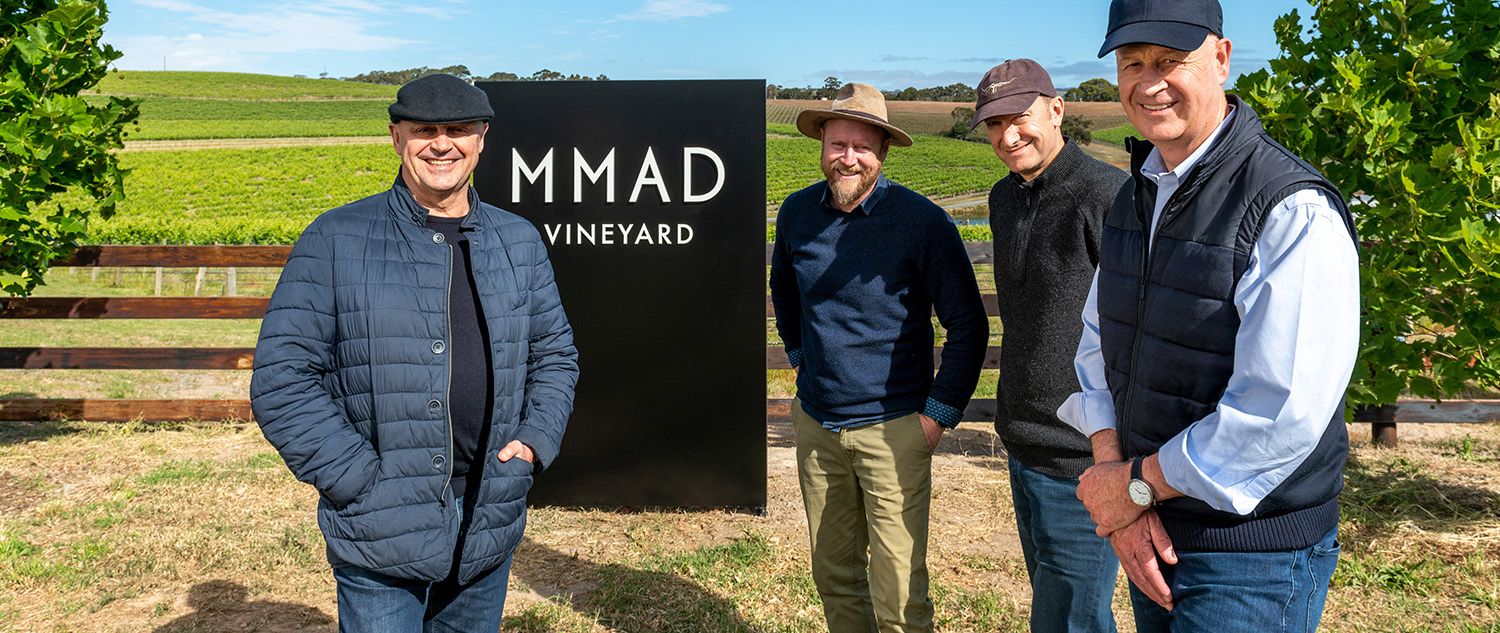
Then you have your most recent project, MMAD in McLaren Vale, how did this come to be?
Adam [Wadewitz] and David [LeMire MW] are a talented pair and they’re also close friends. Martin and I told them, ‘Find a project that excites you and let’s do it together’. Hence, MMAD: Michael, Martin, Adam and David. As it turns out, Adam was born in McLaren Vale, and we had always been interested in what was happening with old Grenache down there, with the likes of Steve Pannell and Willunga 100. We were intrigued by this renaissance of old-vine Grenache.
We found a 20-hectare vineyard of old vines in Blewitt Springs, with Grenache planted in 1939, Shiraz in 1941, and Chenin Blanc in 1964. Once again, it has been really fascinating to see what Adam has done with this heritage old vine vineyard.
The Chenin Blanc is particularly interesting because of its high acid and waxy aromatics. The old vine Grenache is just lovely, too, combining beautiful aromatics and perfume with flavour concentration and lightness. I'm a recent convert to delicious modern Grenache.
The wine which I had the least expectation for, but has really surprised us, was the Shiraz. I wasn't convinced that the world needed another McLaren Vale Shiraz, to be perfectly honest. Adam [Wadewitz] changed that. He picks a little earlier, includes a bit more whole bunch and avoids any use of new oak. It’s Shiraz reimagined and it’s terrific.
We’re very lucky. We've got three distinct projects, each with their own personality. And, you know, so far, they seem to be doing well!
There’s a really great quote from Adam Wadewitz where he talks about how, in the beginning, the Shaw + Smith wines were made in the winery, but now they’re made in the vineyard. That approach translates across to Tolpuddle and MMAD. It’s the thread that connects all three projects.
Absolutely. Most winemakers say that they try to make wines of place. This isn’t a new concept, but the difference with Adam is that he wants to make wines that capture both place and the season. He’s very happy making wines in a slightly warmer year that are a bit richer or wines in a slightly cooler year which are a little tighter. He respects both place and season. I really like that.
It's been 34 years, so we have been making wines for a while, and they have never been better. Our team, which now includes my daughter, Mathilda, is young and enthusiastic and continues to challenge the status quo. So it's still fun going to work after all these years – there’s so much enthusiasm at the winery.
Something that’s always wonderful to see when visiting wineries is the empty bottles winemakers keep, the kind of wines that influence them. So, to conclude, a question I like asking our producers is, what do you like to drink? What kind of wines are influencing you and your wines?
At Shaw + Smith, something we’re very proud of is our strong wine culture – it is part of our DNA. So, for example, most Friday nights, we play “Options” [a multiple-choice, blind-wine game], and you've got people from the bottling line and the office getting as involved as the winemaking team. We really encourage everyone to be part of it. Wine literacy and education are really important to us.
For me personally, I have a passion for Burgundy, and I love the Northern Rhône. I've also been a very late convert to Barolo, but I think, in a way, that’s because I love modern Barolo - what they're doing now is so much more vibrant.
For more information about purchasing any Shaw + Smith, Tolpuddle Vineyard or MMAD wines, please contact your Account Manager. Not yet a customer? Contact Us to discuss opening an account.
